From the origins of DS-Max up to the business model used by its descendant companies today.
History
W.M. Industries Inc. (WMI)
Founded in 1975 in Canada by Larry Hahn, WMI was a retail business that went door-to-door selling products such as perfume, toys and luggage.[1] With no financial support or education, Larry spent several years training new recruits while living out of his car. By the 1980’s there were thousands of distributors. Recruits were promoted based on their sales, with sales following the Law of Averages (the more doors you visit, the more sales you’ll get). Convicted of tax evasion, WMI was forced to leave the country. The distributors had a choice: relocate to the US or be out of a job.
Wholesale Warehouse Industries (WWI)
In 1980 former WMI distributer Murray Reinhart decided to start his own company – Wholesale Warehouse Industries – despite being heavily in debt.
WWI was largely a carbon copy of its predecessor. Instead of altering WMI’s formula, Murray sought to eliminate the racial discrimination he himself had faced.[2] Murray focused on the power of positive attitudes when selling. Promotions were now based on building a crew of five leaders rather than sales.
Murray recruited fellow Canadians Larry Tenambaum and Avie Roth, later known collectively as ‘The Big Three’. Selling pots and pans bought from wholesalers at heavily marked up prices, Murray found that customers were influenced more by enthusiasm than price. The Big Three would train up to ten salesmen per day. As their revenue increased, so did their buying power. The greater the profits (and therefore volume discount) the cheaper the goods. Eventually they could afford a suite in an industrial park.[3] Soon the direct sales workforce became more efficient and productive, and Canada became saturated with offices. By 1986, WWI had started its international expansion.
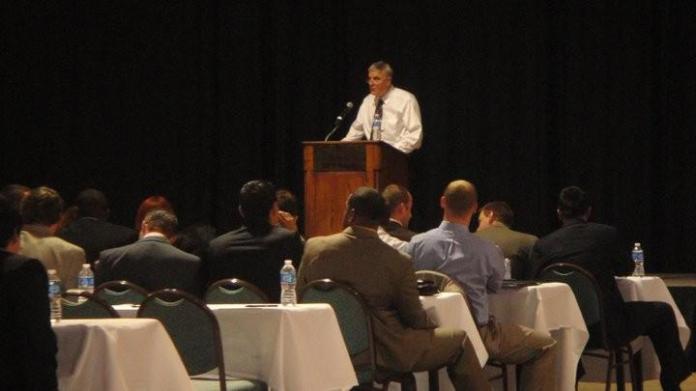
Larry Tenambaum. See more photos here.
DS-Max (Direct Sales to the Maximum)
After some bad press in the early 90’s, WWI was renamed DS-Max.[4]
While previously only clearance items had been resold, DS-Max now started manufacturing their own products. DS-Max sprouted factories, bought patents and rose fields. Distributors would pitch to business owners and leave shelves of products in their locations. The Big Three had proven that a good attitude could sell anything, to ‘sell the sizzle, not the steak’.
By the mid 90’s, offices were grouped according to the products and services sold. The backbone of the company, selling DS-Max products, became The Clearance Division. There were the Roses Division, the Aliron Division, the Books Division and many others that no longer exist.
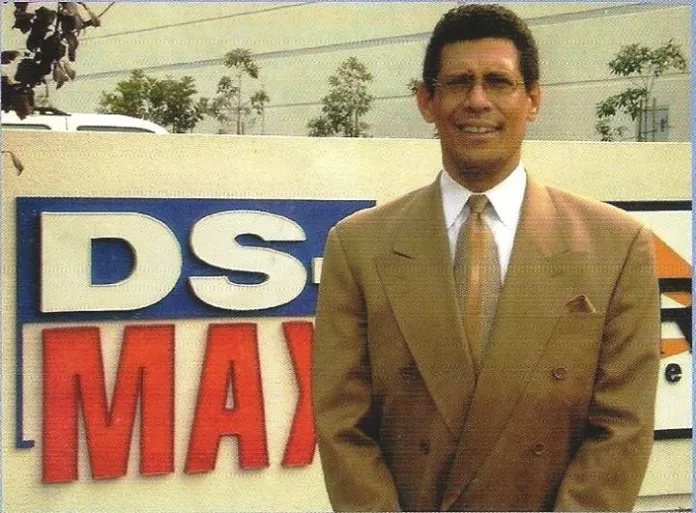
A Young Murray Reinhart. See more photos here.
The Advertising Division (1990)
The Adverting Division would henceforth represent third parties instead of exclusively their own product line. Employees named ‘Listers’ would seek out small businesses and propose advertising campaigns. The New York Yankees campaign marked a turning point. In the early 90’s, while the Yankees were struggling with ticket sales, DS-Max listers proposed a ‘buy one get one free’ coupon. The Advertising Division sold the coupons, kept the profit, and within one baseball season had filled 150,000 seats.[5] DS-Max began to gain traction.
The Communications Division (1992)
Other DS-Max Divisions only dealt with immediate transactions of money in exchange for goods, but now The Communications Division would sign up customers to contracts for subscription-based services.
AT&T was the first client for The Communications Division. The campaign proved so successful that AT&T formed a new department to deal exclusively with DS-Max applications. Today, what would became Cydcor is responsible for over 41% of AT&T’s overall clientele.[6]
By the millennium, DS-Max had a net worth of $75 billion, 15,000 offices worldwide and 2.2 million independent distributors.[7] Murray said that his company offered “the greatest opportunity in the world.”[8]
Descendant companies: Innovage, The Smart Circle, Cydcor etc.
In 2005, due to negative publicity, the DS-Max organisation divided into its descendant companies. All direct connections with DS-Max have been severed, and the ‘DS-Max’ moniker removed from all company names. Instead, each division now promotes their own identity.
The Clearance Division spun off and became Innovage. The company purchases “millions of pieces of merchandise from partners like Disney, Warner Brothers and Vivitar” from thousands of factories, sourced by Three Sixty Sourcing Ltd.[9]
The Advertising Division became Granton Marketing, renamed The Smart Circle International in 2005. The Smart Circle still deals primarily with coupons from contracts with restaurants, fitness clubs, professional sports teams, auto body shops, hotels, golf courses and others. Clients include Domino’s Pizza, Hilton Hotels, The New York Yankees and Miami Heat.[10]
The Communications Division became Cydcor. Cydcor still signs up customers for monthly services. They serve clients across North America, including ATT, Sprint, Visa, MasterCard, CSI, DTV, Optus and many others.[11]
Another notable mention is the Appco Group (The Cobra Group), a Sydney offshoot founded by an employee of DS-Max in 1980s, Chris Niarchos. It is now primarily based in the UK. The Appco Group is a “billion-dollar group of diversified companies” with “more than 800 offices in 26 countries on five continents”.[12] Clients include npower, Sky, British Red Cross, American Express and Coca-Cola.
Murray Reinhart has retired from the business but occasionally delivers motivational speeches at conventions. [13]
The DS-Max Business Model
Each descendant company of DS-Max has a loose confederation of international sales offices.
Each sales office is an independently owned and operated limited company, legally bound to the descendant company only through a marketing contract. Therefore the DS-Max descendant companies remain insulated from any legal or financial liability, making guidelines on ethical conduct difficult to enforce.
Recruiting is done in the name of the affiliated limited company and any discredited company names are immediately changed. This makes it difficult to establish a connection between the independent sales offices and a descendant company, as well as challenging for prospective employees to discover bad press. However, similarities in business practices often indicate an affiliation with a DS-Max descendant company.
Suppliers, such as Innovage, supply merchandise to their sales offices. Innovage employees coordinate shipping and storing of products. Sales and marketing companies, including Accpo Group, The Smart Smile and Cydcor, are ‘Listers’. Their employees find client leads for their sales offices. Clients such as AT&T sign a marketing contract with a reputable descendant company, which in turn outsources the contract to an affiliated sales company. All main offices of these descendant companies also process paperwork, admin, bookkeeping and some legal expenses. All affiliated companies pay their descendant company a set fee for this work, plus a cut of their profits in exchange for access to their clients and/or merchandise.
A different kind of MLM
The DS-Max Marketing Scheme classifies as multi-level marketing since products are directly sold to the customer. It does not, however, classify as an illegal pyramid scheme since profits are not made from participation fees.[14] There are several key differences that set it apart from other multi-level marketing businesses:[15]
- All members begin as a Field Representative. Their income is completely commission based (rather than a slow transition from part-time to full-time). Members work for 12 or more hours a day, often 6 days a week, and must pay for all expenses since they are ‘self employed’ independent contractors. They are not officially associated with the company yet form their cost-free workforce. Only a small group of Vice-Presidents (now called National Consultants) have achieved the high levels of success that is promoted during the initial recruitment process.
- The Manager of a sales office is financially and legally responsible for their limited company and handles day-to-day office and recruitment expenses. The independent office would typically have one room for members, room(s) for the manager(s), a reception, a waiting room and a room where merchandise (if any) is stored under lock and key. It is not unknown to have multiple managers running different campaigns sharing the same office and splitting the rent.
A simple formula means the network of these affiliated companies grows exponentially. One company helps a member set up their own independent limited company, which eventually generates a new manager that in turn sets up their own company – ad infinitum. The descendant company then compensates the Manager of the first company for half of their workforce moving to a new office. - For products, distributors receive the goods on consignment, thus the distributor does not pay for them up front. Distributors of services only receive their full commission once an application has been approved. There is no fee for becoming a distributor. This was the payment system for the AT&T campaign in 2000. AT&T paid $10 (~£6) for each customer that the field representative signed up. The parent company took $3, the manager of the affiliate company took $3 and the field representative took the remaining $4.[16] If the application didn’t go through, AT&T was refunded the entire $10 due to the Security Bond arrangement.[17] This way AT&T only paid $10 for each successful customer and got free marketing, making it far more effective than conventional advertising.
Multi-Level Marketing Criticism
Thousands have felt exploited after never having achieving the high level of financial reward that was promised. In 2009, The Direct Selling Association estimates there are 16.1 million ‘direct’ salespeople in U.S. alone who earn a median annual income of $2,400 (£1,490).[18][19][20] Only 8% gross more than $50,000 (£31,000) in annual income.[21]
Certain practices employed by Multi Level Marketing companies have also been criticised for being cult-like. Roland Whitsell, a former business professor with 40 years of researching multilevel marketing claimed that “You’d be hard-pressed to find anyone making over $1.50 an hour…The strongest, most powerful motivational force today is false hope”.[22][23]
FOOTNOTES
- W.M. Industries Inc. is now known as Scentura Creations. This company is also associated with World Perfume, since the founder was a distributor for Scentura Creations. Both companies use similar business practices to DS-Max. ↩
- Murray Reinhart was Black and half Jewish. Coincidentally, Murray had also lived out of his car. ↩
- Murray’s first desk was made out of standard, plastic crates. ↩
- DS-Max is also be referred to as DsMax, DSMAX, Ds-Max and DS-MAX, among others. It stands for Direct Sales to the Maximum. The actual company name was D S Max USA Inc and/or D S Max Canada Inc ↩
- Obtained from reocities.com article “DSMAX History” ↩
- Obtained from reocities.com article “DSMAX History” ↩
- Obtained from netipedia.com article “DS-MAX“. N.B. Because the company represents a loose confederation of independent offices there is no reliable way to verify these estimates. Only by analysing accurate and detailed records of these organisations and their affiliates, can verify estimates. These types of public financial disclosure are almost impossible to obtain as each individual office is privately owned and thus is not required to disclose any information. ↩
- Obtained from reocities.com article “DSMAX History” ↩
- Obtained from Web Archive of Innovage Website. ↩
- Obtained from Web Archive of Smart Circle Website. ↩
- Obtained from DS-Max section of wolfram.org ↩
- Obtained from Cobra Group website. ↩
- Obtained from DS-MAX netipedia Article. ↩
- Obtained from State of Michigan article “Multi-Level Marketing or Illegal Pyramid Scheme?” ↩
- Most of the controversy surrounding Multi-Level Marketing is with regards to companies not part of the DS-Max scheme. Members aggressively recruit as many people as possible in order to gain profits through bonuses and commissions (as opposed to selling the actual product). Many ‘Independent Sales Representatives’ end up with garages full of products that rarely get sold. They are criticised for their similarity to illegal pyramid schemes, with price fixing, high entry fees, high costs (for marketing kit and first products) and the exploitation of personal relationships. Well known companies associated with this type of Multi-Level Marketing include: Amway, Herbalife, Avon, Fortune Hi-Tech Marketing and Mary Kay Cosmetics. ↩
- Obtained from DS-Max section of wolfram.org ↩
- The Security Bond Arrangement refers to the certain portion of an FRs commission held back and returned only when the sale is approved. In the gas and electric sector this would mean that the subscription is cancelled before the switch over. In the charity direct debit sector this would mean a donor cancels before a certain length of time has elapsed. Should the sale fail, money is taken out of the bond and refunded to the client. After a certain amount of time, to ensure sales are completed, whatever money is left in the bond is released onto the FRs. This ensures the company only pays for sales that would make them money. See Agreement for more details. ↩
- The Direct Selling Association represents “companies that have multilevel compensation plans” in the U.S. ↩
- Obtained from USA Today article “What kind of business do you want to start?” ↩
- Obtained from USA Today article “Multilevel marketing or ‘pyramid?’ Sales people find it hard to earn much.” ↩
- Obtained from Entrepreneur Article “Direct Sales: Golden Opportunity or Hype?” ↩
- Another criticism is that, although Multi Level Marketing may have been a useful to reach isolated areas, with the advent of ecommerce it may have outlived it’s usefulness. ↩
- Obtained from USA Today article “Fortune Hi-Tech: American dream or pyramid scheme?” ↩
DISCLAIMER. Find my full list of references on the References Page.

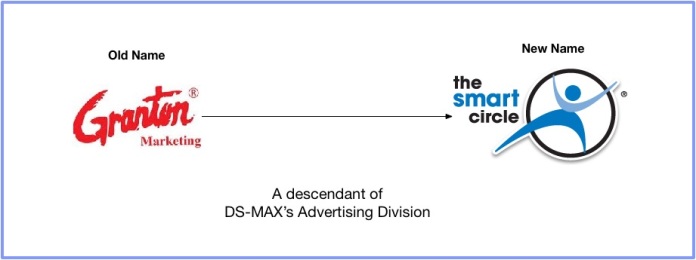
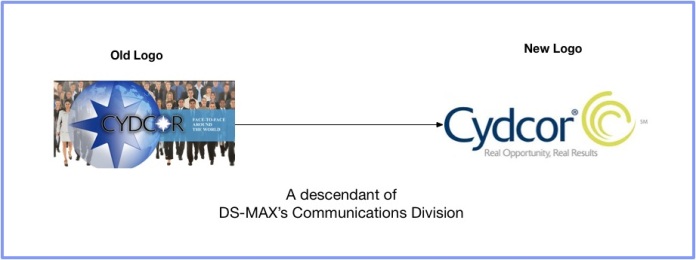
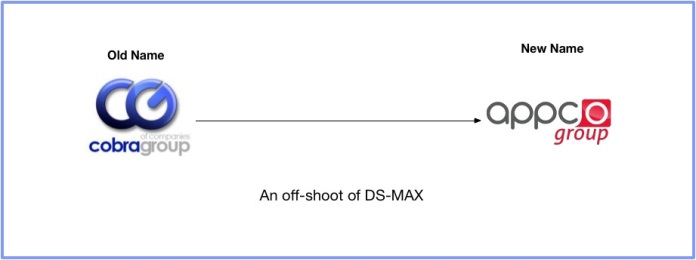
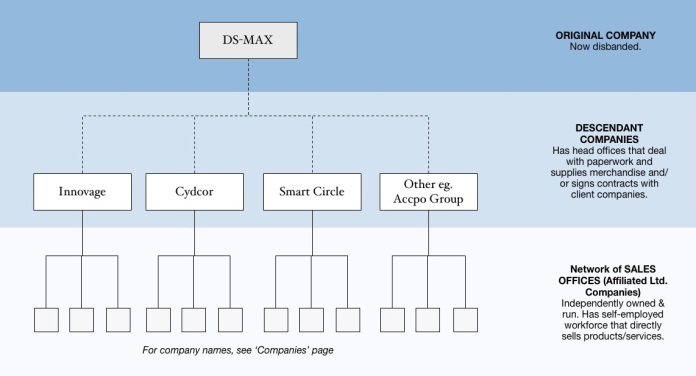
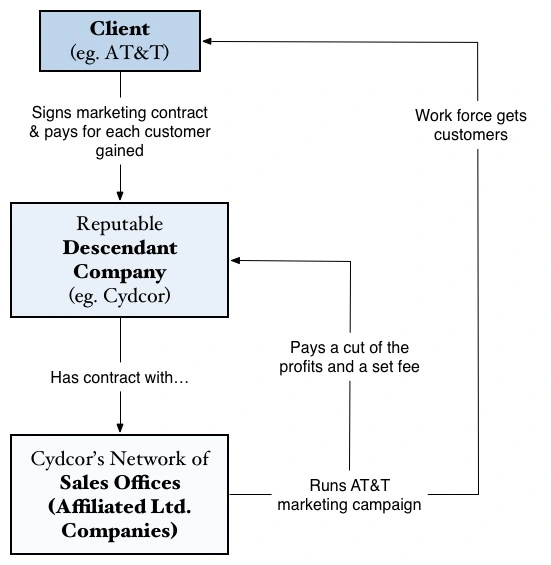
Mike Amatuzio- l was involved with DS-Max for 4 years. We opened our office in Toronto with a partner in the business. This was an opportunity to make money and have fun, this was our Motto. We learned more about sales than any Text Book could teach. It was all about attitude, having a great attitude and maintaining your great attitude after every no or negative comment. We developed a thick outer layer of skin.
I have one recruit for the summer, his mom called me and thanked me for breaking the shell around her son. He was a totally different person at the end of the summer.
He changed from zero confidence to opening up with 100% confidence.
I’m very excited to have gone through the history of Murray Reinhart , founder of DS Max.
Is very interesting and educating, motivating to someone becoming an entrepreneur.
Great he is.
I started with Larry Kahn Fall of 1980 in Atlanta Ga. Selling luggage, onyx chess sets , digital watches, 40 pc socket sets and 5 piece wicker baskets.
By March 1981 was promoted as an assistant GM to a David Lipps and sent to Houston,Texas.
There I was recruited by a Mark Shottenfeld a pots and pans and bakeware division of WMI. This was the number one sales office in the U.S. at the time, with 50 hustlers on the streets of Houston. I became the head trainer for Mark through summers end.
My experience with WMI was good in that I was able to hone my skills in cold calling.
I then found a distributor in Houston by the name of Sam Mano out of Philly. He had the contact for same pos and pans as well a bakeware. Over the next two years we added the imported tools coming into the
Port of Houston. I established the manager with 5 salesmen business model and we ended up with 11 teams in one location. As GM my salary and overrides payed me about $70k in 1982 into summer 1983.
September of that year I left Sam and started The Midsouth Tool Company in Corpus Christie, Texas. Establishing managers with 7 man teams.
8 teams rotated out of South Texas across the state on very successful weekly road trips 4 teams alternating every other week.By end of 1984 we established 5 more sales offices in Austin, Texas…..
Houston,Tx
Tulsa,Ok…..
Little Rock,Arkansas
New Orleans,La
Using the same business model.
At age 25 Both me and my partner Pete were knocking down $375K each in 1984
In 1985 I sold my share to Pete
Moved back to my home State of Indiana and started a Distribution company, Three Rivers Trading, selling products to convenience stores with 10 box trucks throughout Indiana, Ohio and Kentucky.
2004 best year $8 Million in sales.
After 35 years sold in 2010 and retired at age 53.
THANK YOU WMI
Hello Mr.Reinhart
My name is Joe Blumberger
I was working in California with Coleman York .
My Sister Francois was married to Coleman.
I wanted to reach out to you and say hello .
I also wanted to speak with Avi Roth.
If possible can you email me your contact details or give my details to Avi.
Email Add: blumburger@yahoo.com
What’s app # +16473328585
I have some business I would love to discuss !
Thank you so much and Shabbat Shalom!
The information about the communications division is extremely inaccurate and by extension so is the rest of the information about DSMax
Pingback: the Smart Circle/devilcorp Entrepreneurship Lie – Canada Man's Sandbox
So when i started they were just changing from DS_MAX to innovage. ( did’nt matter to me) it was explained they were our supplier, I was taken to the deep hood in Detriot, raining destroyed i 200 pair of shoes. Lunch was provided as promised Churches Chicken (lol) ive had worse . At the end of the day i met with the Manager he was this skinny ginger , when he spoke i could not stop thinking ” this must be his dads place ( but it was not. The thing that stuck with me the most was all promotions were earned not handed out because of who you knew who you were how long you were there. Also that in 6-12 months anyone ( who reaches there goals could be there) 6-12 months na no time for all that i could do it faster. 7 weeks from the day i walked through the door i was promoted to Asst. Manager. 12 weeks i opened my own location . NOW LOOK!!!!!!!!!!!
I went through a lot of ups and downs sideways and backwards to get where i was. Nothing was handed to me, but what i was told would happen if i did my part really happened. No one i have ever worked with trained or even met has ever claimed that everyone can do it ( because thats just not true) just like any other Exe. postion you have to bleed for it, no one gets it handed to them ( except maybe trust fund babies). I am sure there have been horror stories out there are true BUT like you read on this page its notDS_MAX<INNOVAGE<SMART CIRCLES fault its the office and managers in those cities. People who fail need to blame someone other then themselves, Look my 1st 6 weeks as a manager i banked $25,000 cash banked ( not including what i spent ) 4 month later i was being retrained because i was in the hole 40,000 went in the field paid it back and opened my next office and several sub offices from there on . Made a ton of money SPENT a ton of money Saved some and moved on, 1 years before the clearance division was shut down. 4 years later i came back to Smart Circle and reaping Directv in BestBuy ane Sams club , once again building my team opening my own office and making money. Me leaving for good was personal an had zero to do with Smart Circle, I had a great relationship with Larry T and other high ups. Look my mamager was a shithead always playing the angles bla bla bla. I still sit here telling you all to on and take the loss learn from it dust yourself off and move on.
Peter
New Yorker stuck in MI
Français
Version française l